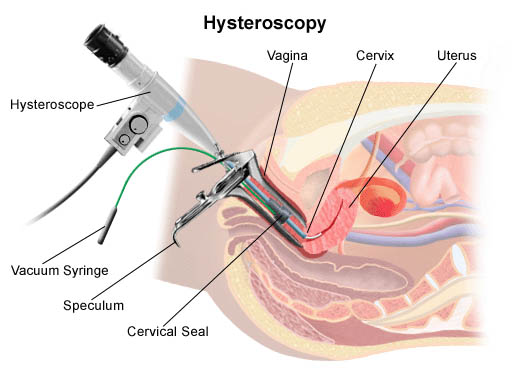Hysteroscopy procedure - risks and side effects

What is Hysteroscopy procedure
Hysteroscopy is a diagnostic or therapeutic procedure to examine the interior of the UTERUS using a lighted magnifying endoscope. Hysteroscopy is an outpatient surgical procedure that requires regional or general ANESTHESIA. After the administration of anesthesia the gynecologist dilates the CERVIX and inserts the lighted, flexible tube of the hysteroscope into the uterus and fills the uterus with carbon dioxide gas or sometimes liquid saline solution to push the uterine walls apart.
The hysteroscope allows the gynecologist to closely examine the entire endometrium (lining of the uterus) and the entries to the FALLOPIAN TUBES. The gynecologist may use the hysteroscope to obtain tissue samples for biopsy, remove UTERINE FIBROIDS or polyps, and repair minor injuries to the wall of the uterus and certain congenital malformations such as uterine septum.
Hysteroscopy Risks and Side Effects
The risks of hysteroscope include those of anesthesia as well as INFECTION, excessive bleeding, and uterine perforation (puncture of the uterine wall). These risks are uncommon though may require further treatment. Infection requires treatment with ANTIBIOTIC MEDICATIONS. Uterine perforation usually heals on its own. Excessive bleeding may require medications or follow-up surgery to control. Minor bleeding and discomfort (cramping) are normal after hysteroscopy and may continue for a few days.
See also COLPOSCOPY; ENDOSCOPY; SURGERY BENEFIT AND RISK ASSESSMENT.